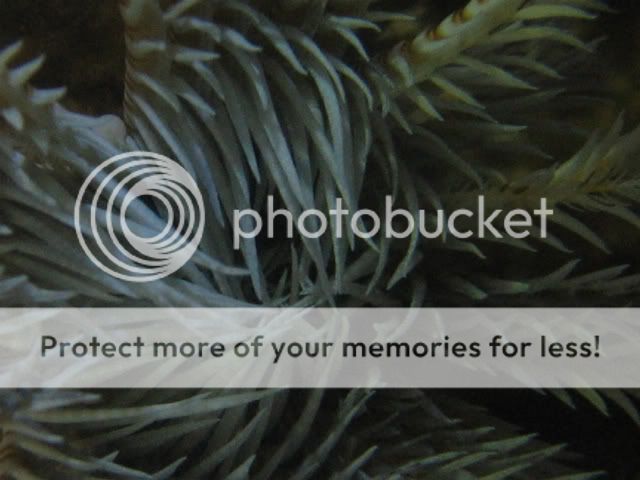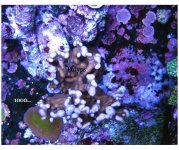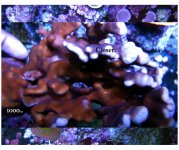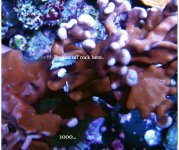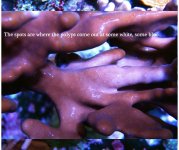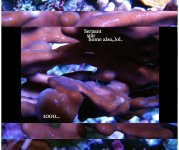- Location
- Yonkers, NY
You are using an out of date browser. It may not display this or other websites correctly.
You should upgrade or use an alternative browser.
You should upgrade or use an alternative browser.
Aquabacs' 50 Gallon Azooxanthellae Tank build
- Thread starter Aquabacs
- Start date
- Location
- Yonkers, NY

Mike
- Location
- Yonkers, NY
<object width="640" height="385"><param name="movie" value="http://www.youtube.com/v/B9Hyad49xpQ&hl=en_US&fs=1&rel=0&color1=0x3a3a3a&color2=0x999999"></param><param name="allowFullScreen" value="true"></param><param name="allowscriptaccess" value="always"></param><embed src="http://www.youtube.com/v/B9Hyad49xpQ&hl=en_US&fs=1&rel=0&color1=0x3a3a3a&color2=0x999999" type="application/x-shockwave-flash" allowscriptaccess="always" allowfullscreen="true" width="640" height="385"></embed></object>
- Location
- Yonkers, NY
<object width="640" height="385"><param name="movie" value="http://www.youtube.com/v/QbFcrPNp1sI&hl=en_US&fs=1&rel=0&color1=0x006699&color2=0x54abd6"></param><param name="allowFullScreen" value="true"></param><param name="allowscriptaccess" value="always"></param><embed src="http://www.youtube.com/v/QbFcrPNp1sI&hl=en_US&fs=1&rel=0&color1=0x006699&color2=0x54abd6" type="application/x-shockwave-flash" allowscriptaccess="always" allowfullscreen="true" width="640" height="385"></embed></object>
- Location
- Yonkers, NY
<object width="640" height="385"><param name="movie" value="http://www.youtube.com/v/ml3jsKWjd4U&hl=en_US&fs=1&rel=0&color1=0x006699&color2=0x54abd6"></param><param name="allowFullScreen" value="true"></param><param name="allowscriptaccess" value="always"></param><embed src="http://www.youtube.com/v/ml3jsKWjd4U&hl=en_US&fs=1&rel=0&color1=0x006699&color2=0x54abd6" type="application/x-shockwave-flash" allowscriptaccess="always" allowfullscreen="true" width="640" height="385"></embed></object>
- Location
- Yonkers, NY
<object width="640" height="385"><param name="movie" value="http://www.youtube.com/v/OmBB2DA3yps&hl=en_US&fs=1&rel=0&color1=0x006699&color2=0x54abd6"></param><param name="allowFullScreen" value="true"></param><param name="allowscriptaccess" value="always"></param><embed src="http://www.youtube.com/v/OmBB2DA3yps&hl=en_US&fs=1&rel=0&color1=0x006699&color2=0x54abd6" type="application/x-shockwave-flash" allowscriptaccess="always" allowfullscreen="true" width="640" height="385"></embed></object>
- Location
- Yonkers, NY
Dendro & Crinoid
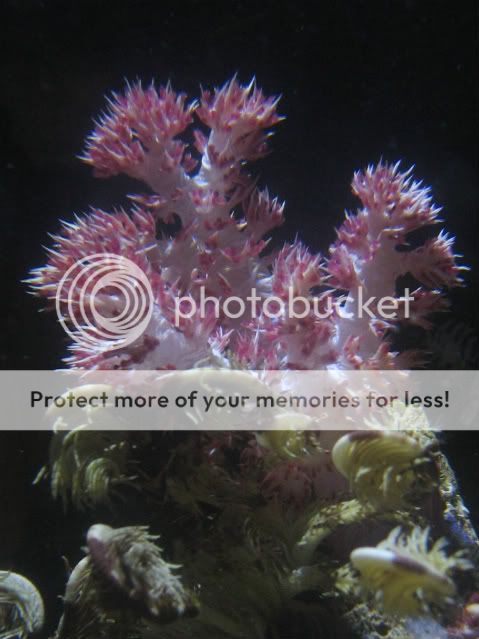
Mike

Mike
- Location
- Yonkers, NY
- Location
- Yonkers, NY
<object width="640" height="385"><param name="movie" value="http://www.youtube.com/v/UZ96i-XzITw&hl=en_US&fs=1&rel=0&color1=0x3a3a3a&color2=0x999999"></param><param name="allowFullScreen" value="true"></param><param name="allowscriptaccess" value="always"></param><embed src="http://www.youtube.com/v/UZ96i-XzITw&hl=en_US&fs=1&rel=0&color1=0x3a3a3a&color2=0x999999" type="application/x-shockwave-flash" allowscriptaccess="always" allowfullscreen="true" width="640" height="385"></embed></object>
- Location
- Staten Island
Post # 166 what is that?? looks like algae on a dead coral,,lol..
- Location
- Yonkers, NY
Post # 166 what is that?? looks like algae on a dead coral,,lol..
That is what a healthy Distichopora should look like
Taken from ARLive:
http://www.arkive.org/lace-coral/distichopora-violacea/info.html
"Unlike many coral species, lace corals do not have the symbiotic algae zooxanthellae living within the coral tissue; they are azooxanthellate (2). They are therefore not dependent on light and thus can live where the reef-building corals, dependent on photosynthetic algae, can not.
Lace corals are hydrozoans, and thus have different type of polyps with different functions than anthozoan corals. The polyps of hydrozoans are near microscopic size and are mostly imbedded in the skeleton, connected by a network of minute canals. All that is visible on the smooth surface are pores of two sizes; gastropores and dactylopores. The rows of gastropores flanked by one of two rows of dactylopores are diagnostic of the genus (3). Dactylopores house long fine hairs that protrude from the skeleton. The hairs possess clusters of stinging cells (nematocysts) that can inflict stings on human skin. These hairs capture prey, which is engulfed by gastrozooids, or feeding polyps, situated within the gastropores (2).
Reproduction in lace corals is more complex than in reef-building corals. The polyps reproduce asexually, producing jellyfish-like medusae, which are released into the water from special cup-like structures known as ampullae. The medusae contain the reproductive organs, which release eggs and sperm into the water. Fertilised eggs develop into free-swimming larvae that will eventually settle on the substrate and form new colonies. Lace corals can also reproduce asexually by fragmentation (5) (6)."
References
1.CITES (October, 2009)
http://www.cites.org
2.Veron, J.E.N. (2000) Corals of the World. Vol. 3. Australian Marine Science Institute, Townsville, Australia.
3.Lindner, A., Cairns, S.D. and Guzman, H.M. (2004) Distichopora robusta sp. nov., the first shallow-water stylasterid (Cnidaria: Hydrozoa: Stylasteridae) from the tropical eastern Pacific. Journal of the Marine Biological Association of the UK, 84: 943 - 947.
4.Waik?k? Aquarium Education Department (July, 2007)
http://www.waquarium.org/MLP/search/sp_lace_coral.html
5.Borneman, E.H. (2001) Aquarium corals; Selection, Husbandry and Natural History. T.F.H. Publications, New Jersey, USA.
6.Wood, E.M. (1983) Reef corals of the world: biology and field guide. T.F.H. Publications, New Jersey, USA.
7.Wilkinson, C. (2004) Status of Coral Reefs of the World. Australian Institute of Marine Science, Townsville, Australia.
8.Green, E. and Shirley, F. (1999) The Global Trade in Corals. World Conservation Press, Cambridge, UK.
Mike
- Location
- Staten Island
My Lace coral
Thanks, I learn something new everyday.. I too have a lace coral.. Mine is about 12" with over 30 tips..When it slimes like that I usually put too much vodka all at once so I stopped vodka dosing and now do vinegar and kalk.. It just started growing recently.. When I started feeding my fish fillet blend to my 18 dispar anthias school then I also noticed more growth onto a rock next to it.. The polyps are a lot bigger, usually before the lights come on much like my chili coral and sometimes right after i feed.. You can see some of the larger polyps in the 1st picture..
Thanks, I learn something new everyday.. I too have a lace coral.. Mine is about 12" with over 30 tips..When it slimes like that I usually put too much vodka all at once so I stopped vodka dosing and now do vinegar and kalk.. It just started growing recently.. When I started feeding my fish fillet blend to my 18 dispar anthias school then I also noticed more growth onto a rock next to it.. The polyps are a lot bigger, usually before the lights come on much like my chili coral and sometimes right after i feed.. You can see some of the larger polyps in the 1st picture..
Attachments
Last edited:
- Location
- Yonkers, NY
The coral pictured looks like a fire coral (photosynthetic Millepora sp) slightly different than lace coral (non-photosynthetic Distichopora) but both are Hydrocorals. The care for these corals are on two different levels. The coral you pictured grows well in photosynthetic aquariums (almost like weeds) and can easily be maintained. Distichopora, requires intense daily feeding, no light, and there are very little success stories in keeping this coral alive in a closed system. Most of the time when reefers purchase this coral it is close to dead, starved, or actually dead before they even bring them home.
Mike
Mike
Last edited:
- Location
- north jersey
i sure hope that what bob1000 has in his hand is not a fire coral. :Yikes: ....or perhaps he is immune to their sting.
it looks to me more like a blue ridge coral.
it looks to me more like a blue ridge coral.
Last edited:
- Location
- Staten Island
I was told it was a blue ridge coral but the color never changed from what it is in a couple months now.. It also resembled what Mike posted so I thought I'd ask about it.. I touch everything I have been poked by fish and in pain the whole night,,lol..
- Location
- Brooklyn, NY
Tobin, it is a Blueridge coral--Heliopora coerulea and as stated not a true coral but an octocoral. It is not fire coral nor is it Distichopora. It doesn't change color and is named for the blue skeleton underneath. What it looks like now is what it should look like. On occassion it puts out white polyps, but often it doesn't for long periods of time. It also sloughs a waxy coating regularly, so don't worry if you see that. And it is a harmless coral that doesn't sting anything--I often use it as a platform for mounting other corals.
Last edited:
- Location
- Staten Island
Thanks Randy.. I have seen yellow and blue ridge corals, are those this one or different ones???
- Location
- Brooklyn, NY
- Location
- Yonkers, NY
Thanks Randy for the clarification, my mistake. I don't want to give reefers the wrong information. I guess I have been wrapped up in my non-photosynthetic world to long 
- Location
- Yonkers, NY





